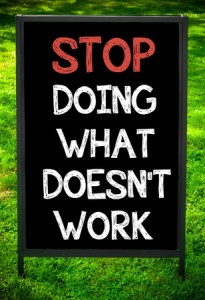Who is the champion in sales processes?
You’ve read all of the latest books, and you tuned in to the webinars and the podcasts and you’re still not achieving your sales goals. You get it that customers are researching products and information on line. You know that buying and selling has changed over the years. You want to transform your process and be at the top of the leader board. So you check the web and find lots of people are pitching their “quick fix” sales process. But how do you know the real difference in the processes and which one will make you a champion? Before you invest in any program consider the information in this article. It will save you from wasting dollars and help you discover the missing link in most sales processes.
In the following paragraphs, we’ll compare the methodologies and point out the good and the not so good in each of them. We don’t point to specific companies but rather the processes they sell.
How is consultative selling out of step with today’s customer?
In the consultative sales process, it’s your job as a sales rep to convince prospects that your product offers the best value. You’ve no doubt put time and money into learning how to create the perfect elevator pitch. But the best elevator pitch only gets you in the door. And sales aren’t closed based on the value proposition alone. So the consultative approach teaches you to begin by offering a value statement that tells the customer who you are and why you’re there. This captures your prospect’s attention and inspires them with possibilities. To ensure the right solution fit, it’s followed by lots of questions to uncover the prospect’s pain. Some reps become skilled with the process and make it seem like a conversation. While other reps, particularly those new to the selling profession, run down the list of questions – making it seem like an interrogation. This grilling frustrates and sometimes alienates the customer. Many salespeople have a formula mindset. They step through a process of asking questions, digging to make the situation worse, and then supply their product as the solution. Several companies offering this process include excellent elements but it’s not quite the right fit for today’s environment.
into learning how to create the perfect elevator pitch. But the best elevator pitch only gets you in the door. And sales aren’t closed based on the value proposition alone. So the consultative approach teaches you to begin by offering a value statement that tells the customer who you are and why you’re there. This captures your prospect’s attention and inspires them with possibilities. To ensure the right solution fit, it’s followed by lots of questions to uncover the prospect’s pain. Some reps become skilled with the process and make it seem like a conversation. While other reps, particularly those new to the selling profession, run down the list of questions – making it seem like an interrogation. This grilling frustrates and sometimes alienates the customer. Many salespeople have a formula mindset. They step through a process of asking questions, digging to make the situation worse, and then supply their product as the solution. Several companies offering this process include excellent elements but it’s not quite the right fit for today’s environment.
Sales Processes Are Evolving
 Both products and the sales processes have evolved. Today, many products can get the core work done and the differences between them are small. Many sales have become more complex and customers have become more informed. Other factors have also impacted the process. As companies downsized, the time it took customers to go through the consultative process robbed them of valuable time. However, customers have found they can be more productive and informed by researching information on the Internet. Now they want something more than questions and a recommendation from a sales person.
Both products and the sales processes have evolved. Today, many products can get the core work done and the differences between them are small. Many sales have become more complex and customers have become more informed. Other factors have also impacted the process. As companies downsized, the time it took customers to go through the consultative process robbed them of valuable time. However, customers have found they can be more productive and informed by researching information on the Internet. Now they want something more than questions and a recommendation from a sales person.
What’s the next approach?
Great research was conducted by several firms into what customers wanted and what the top performing sales reps were doing differently. The researchers found  that customers now want someone who can offer a unique and valuable perspective on the market and help them avoid potential pitfalls. The mindset of the sales person had to change from diagnosing problems and offering a remedy to being a catalyst for change and offering a vision of what is possible. They also want someone who is not there for a one time consultation and close. Instead, they want an ongoing relationship for advice and thoughtful consultations. Customers are also looking for someone who can provide insights and teach them new and valuable things about their company, their industry, or new technologies.
that customers now want someone who can offer a unique and valuable perspective on the market and help them avoid potential pitfalls. The mindset of the sales person had to change from diagnosing problems and offering a remedy to being a catalyst for change and offering a vision of what is possible. They also want someone who is not there for a one time consultation and close. Instead, they want an ongoing relationship for advice and thoughtful consultations. Customers are also looking for someone who can provide insights and teach them new and valuable things about their company, their industry, or new technologies.
With these customer requirements in mind, companies engaged trainers to teach sales reps how to convince customers to think and perform differently. They learned the steps of this new selling methodology: warm up / connect to the customer, introduce new perspectives, why the business challenge is worth time and effort to change, relate it to the person and the company, convince the customer your vision is right for them, and convince them your solution is the best one to solve the issue.
What’s Working and What’s Not Working?
 Successful sales reps have integrated this approach into their style and they’re still building relationships as they apply this process. However, I have seen and heard about sales reps and companies applying the new approach by exerting assertiveness right from the beginning without warming or priming the customer’s mindset. This is a drastic mistake. If you don’t take the necessary steps to build trust and prime the mindset of your prospect you’ll hit a wall and find them very annoyed when you try to impose an insight, no matter how profound and beneficial. Studies show that people are open to ideas and buy almost exclusively from people they know and trust. Personal connections lead to liking and trust.
Successful sales reps have integrated this approach into their style and they’re still building relationships as they apply this process. However, I have seen and heard about sales reps and companies applying the new approach by exerting assertiveness right from the beginning without warming or priming the customer’s mindset. This is a drastic mistake. If you don’t take the necessary steps to build trust and prime the mindset of your prospect you’ll hit a wall and find them very annoyed when you try to impose an insight, no matter how profound and beneficial. Studies show that people are open to ideas and buy almost exclusively from people they know and trust. Personal connections lead to liking and trust.
Unfortunately, many training managers and sales reps have associated building relationships and storytelling with a Willie Loman, “Death of a Salesman” outdated technique. But, relationships are as important today as ever. Robert Cialdini, author of Influence and other books on persuasion, provides many examples of how likeability, familiarity, and similarity have a positive effect on the buyer. These weapons of influence prime the prospect’s mind to continue the sales process and ultimately say “Yes”.
Both the Challenger Sale book by Dixon and Adamson, and Insight Selling by Schultz and Doerr state that storytelling is a method used by successful sales reps to connect, convince, and encourage collaboration in the sales process.
Learn the persuasion technique that opens minds to insights / The Next Phase
 Why do stories work so well? Stories are a non-confrontational way of reframing the process, situation or possibilities. When you tell a story, the buyer purchases the seller and her vision of the transformation that is possible with the solution or idea – not just a product or a concept. Stories work because they generate sparks that create an epiphany in the buyer’s mind. They provide visions of business opportunities that engage you (the storyteller) and your prospect together in co-creating a roadmap of strategies and tactics that lead to the purchase of your product or solution.
Why do stories work so well? Stories are a non-confrontational way of reframing the process, situation or possibilities. When you tell a story, the buyer purchases the seller and her vision of the transformation that is possible with the solution or idea – not just a product or a concept. Stories work because they generate sparks that create an epiphany in the buyer’s mind. They provide visions of business opportunities that engage you (the storyteller) and your prospect together in co-creating a roadmap of strategies and tactics that lead to the purchase of your product or solution.
As a seller and storyteller, you empower the prospect to transform or to transform their company. You bring the vision and ideas to life. When you take this approach and incorporate open ended questions the customer adds information, co-creating the solution. They then co-own the solution and it becomes important to them to have it succeed
This co-created story helps them make the change when changes are hard because the story points to the destination and they incorporate the feelings the prospect will experience at the outcome.
As previously mentioned, stories create a vision. They also relax the listener and remove those automatic barriers prospects put up when meeting with sales people. This is because we associate them with entertainment and we view them as fun. We don’t think of them as work. Stories create sensory associations. The data coming in gets matched to existing patterns so it’s more quickly assimilated. When you use more descriptive words and references to sensory experiences, the better the mental picture you’ve created of the event or the feeling.
We think in pictures, so the more vivid the description, the more the information in stories sticks. As the story unfolds, the prospect gets drawn into the world of the narrator or characters. They envision themselves in the role of the hero and they connect with all of the emotions and experiences.
Stories provide mental simulation. We can’t imagine the sequence of events or the character experiences without activating the same area of the brain that is engaged when we actually experience them. This is why athletes, actors, and speakers all use meditation to “imagine” themselves successful. The unconscious can’t tell the difference between real and imagined. Research on this information is in the Heath brothers’ book Made to Stick and is further explained in their book, SWITCH.
 The vision stories discussed above are only one of the six basic types of stories discussed in Annette Simmons book Whoever Tells the Best Story Wins. In his Book Lead With A Story, Paul Smith of Proctor & Gamble provides over 100 ready-to-use stories for 21 of the toughest challenges business people meet.
The vision stories discussed above are only one of the six basic types of stories discussed in Annette Simmons book Whoever Tells the Best Story Wins. In his Book Lead With A Story, Paul Smith of Proctor & Gamble provides over 100 ready-to-use stories for 21 of the toughest challenges business people meet.
Storytelling and insight are a powerful combination that develops long term relationships and wins sales again and again. Several companies offer a sales process focusing on insight selling. Our company focuses on insight selling and incorporating the right type of story in each of the steps in the sale process. We also train companies to develop and deliver our unique Insight Story Selling Process.
Click the image below to connect directly to Amazon.com“>




